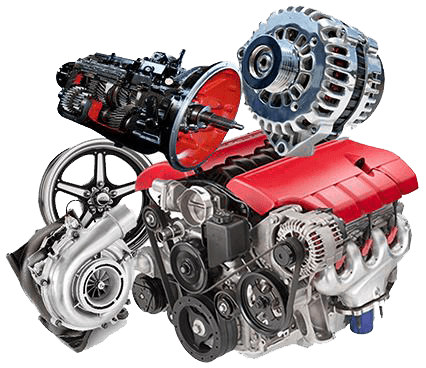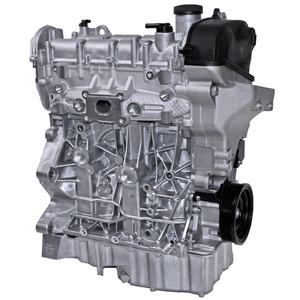Opel Corsa Engine: Top Tips for Upkeep and Care
Opel Corsa Engine: Top Tips for Upkeep and Care
Blog Article
Discovering the Inner Operation of a Compact Car's Engine System
As motorists, we typically take for given the intricate processes that take place within the boundaries of our automobile's engine system. In this expedition of a small car's engine system, we will decipher the inner operations of this mechanical harmony, dropping light on the mysteries that drive us onward on our everyday trips.
Combustion Refine Review
The burning process in a portable car's engine system is a critical system that efficiently transforms fuel into energy to power the lorry. This procedure happens within the burning chamber of the engine, where gas and air mix, spark, and create regulated explosions. The burning procedure is composed of four primary stages: intake, power, exhaust, and compression.
Throughout the intake stage, the piston moves downward, reeling in a combination of air and fuel into the burning chamber. The following stage, compression, includes the piston moving up, pressing the air-fuel mix to boost its effectiveness. Subsequently, in the power phase, the trigger plug stirs up the compressed mix, causing a fast expansion of gases that compels the piston back down. This descending movement creates the power required to drive the automobile. In the exhaust stage, the scorched gases are eliminated from the combustion chamber through the exhaust valve, preparing the chamber for the following cycle. This cyclic burning process is essential to the procedure of a small car's engine system, guaranteeing effective power conversion for propulsion.
Piston and Cylinder Communication

The piston's precise fit within the cyndrical tube is important for keeping ideal compression and avoiding power loss during burning. Limited clearances between the piston and cyndrical tube walls ensure reliable securing, allowing the piston to relocate efficiently without enabling gases to leak past. Proper lubrication is also essential to decrease friction and put on between these elements, improving longevity and efficiency.
Furthermore, the layout and products used in manufacturing the piston and cyndrical tube influence engine effectiveness and longevity. Modern engines frequently use lightweight yet helpful hints resilient materials like aluminum alloys for pistons and cyndrical tube linings to lower inertia and improve thermal performance. Generally, the harmonious interaction in between the piston and cyndrical tube is basic to the engine's capability and total performance.
Fuel Shot System Performance
Fuel shot systems in portable lorry engines play an essential function in precisely providing fuel to the burning chamber for regulated and reliable ignition. The fuel shot system works by infusing fuel into the combustion chamber at the ideal minute during the engine's operation (opel corsa engine). This accurate timing makes sure that the fuel mixes equally with the air for appropriate burning, causing improved fuel efficiency and reduced emissions
There are largely two kinds of fuel shot systems utilized in small car engines: port gas injection (PFI) and straight gas shot (DFI) PFI systems infuse gas into the consumption port before the consumption shutoff, while DFI systems infuse fuel straight into the burning chamber. Both systems have their benefits, with DFI supplying far better fuel atomization and PFI providing an extra affordable option.
Understanding Engine Air Conditioning Mechanisms
Efficient operation of a small automobile's engine counts heavily on the effectiveness of its cooling systems. The air conditioning system in a compact car usually consists of numerous elements working together to regulate the engine temperature level. Recognizing these engine air our website conditioning systems is essential for maintaining the efficiency and longevity of a small lorry's engine system.

Exhaust System Elements Explained
The optimal functioning of a portable automobile's engine cooling systems depends on a corresponding system known as the exhaust system, which makes up various vital parts for ensuring effective emissions and engine performance. The exhaust manifold collects exhaust gases from the engine's cyndrical tubes and paths them to the catalytic converter.
One crucial element of the exhaust system is the oxygen sensing unit, which checks the oxygen degrees in the exhaust gases to help control fuel consumption and make certain optimal engine efficiency. opel corsa engine. In addition, the resonator may exist in some exhaust systems to decrease noise levels. Overall, the exhaust system plays a vital role in preserving engine efficiency, reducing harmful emissions, and making sure a quieter driving experience for compact car owners

Final Thought
Finally, the compact lorry's engine system is a complicated combination of elements that work together to promote the combustion procedure, convert fuel into power, and expel waste gases. Understanding the internal workings of the engine system, consisting of the piston and cylinder communication, fuel injection system, engine air conditioning mechanisms, and exhaust system parts, is essential for preserving optimum efficiency and efficiency of the vehicle.
The combustion procedure in a her latest blog compact vehicle's engine system is a critical system that efficiently transforms gas into energy to power the vehicle.Gas injection systems in compact lorry engines play an essential role in precisely delivering gas to the burning chamber for effective and regulated ignition.There are largely two kinds of gas shot systems used in compact automobile engines: port fuel injection (PFI) and direct gas injection (DFI) Understanding these engine air conditioning mechanisms is important for preserving the efficiency and longevity of a small automobile's engine system.
The ideal functioning of a small lorry's engine cooling systems depends on a complementary system understood as the exhaust system, which comprises numerous vital elements for ensuring effective exhausts and engine performance.
Report this page